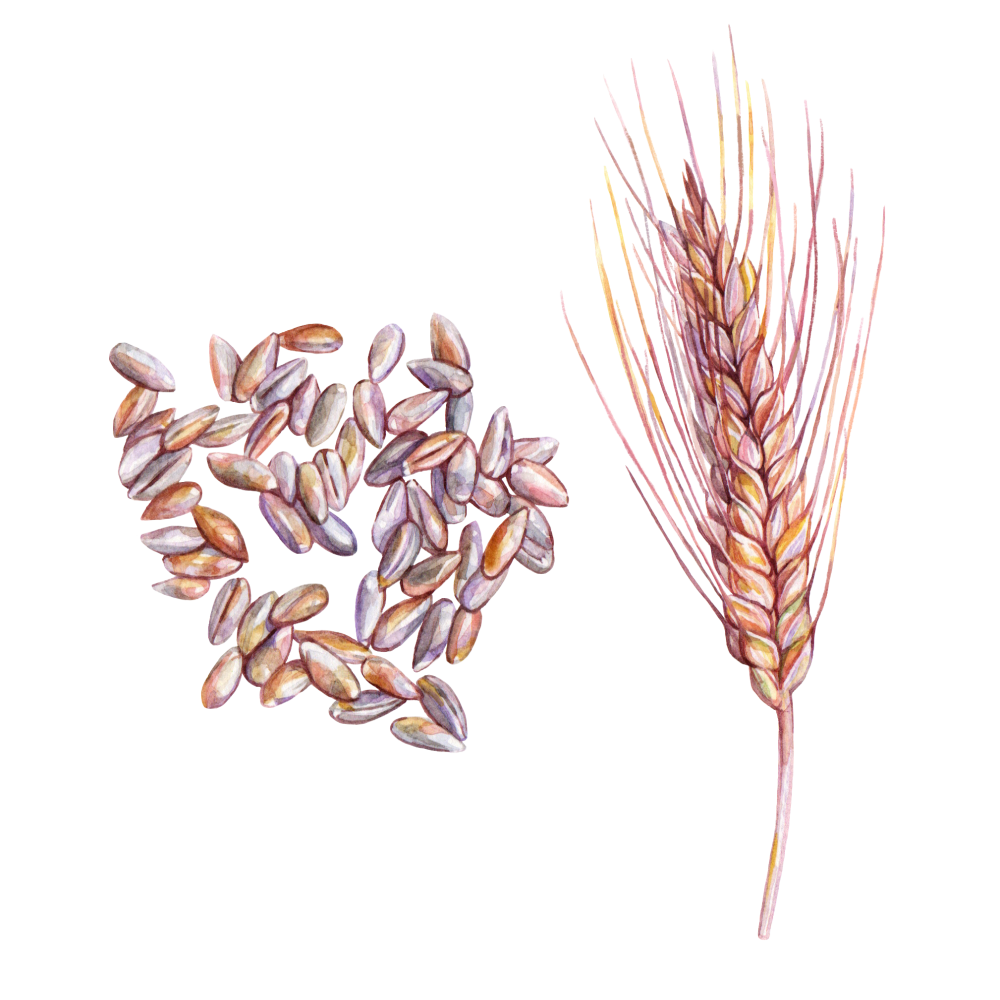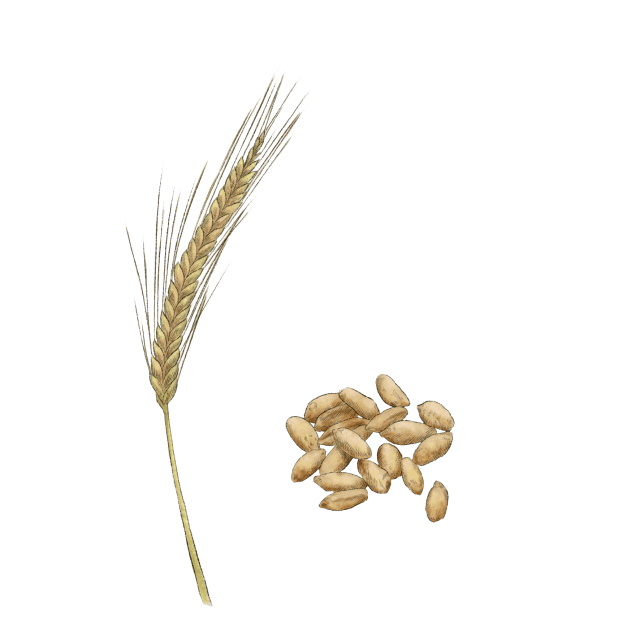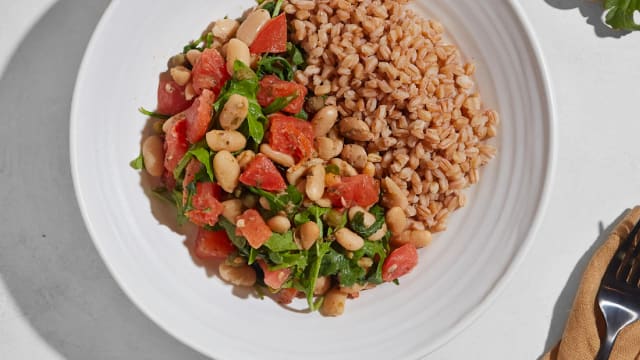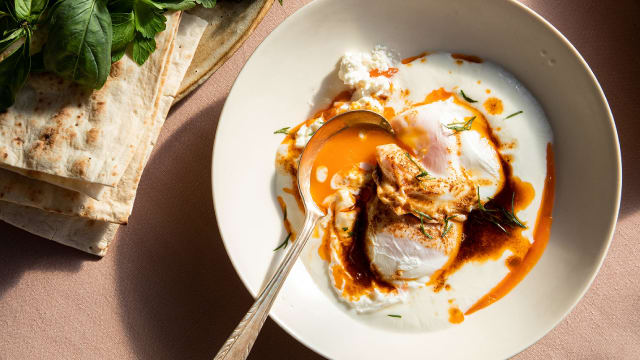Rye

Latin name: Secale cereale
Uses: grain, flour, alcohol
What is rye?
Along with its fellow tribe members wheat and barley (all within the grass family), rye is a cereal used since time immemorial for two of the most important culinary developments in human history: bread and beer. Americans often think of rye in its pumpernickel form, but the flavor and dark color of Jewish deli pumpernickel usually comes from molasses or coffee and commonly includes wheat. For 100% rye bread, you have to look to the bakeries of Northern and Eastern Europe.
Why is rye healthy?
Rye is high in dietary fiber, minerals, and B vitamins, and can increase satiety, improve insulin sensitivity, and lower cholesterol. Although rye flour contains gluten, the type of gluten it contains is much less elastic than wheat and barley, so rye bread doesn’t rise anywhere near as high as wheat.
What does rye taste like?
Rye berries have a wonderful nutty flavor and an earthiness you just can’t get from wheat. Rye is also chewier and heartier than wheat. Rye whiskey has a grassier, greener flavor than bourbon or Scotch whisky.
How do I use rye?
Rye flour can be added to wheat flour to imbue an earthiness and chew to any bread and pizza dough recipe, but rye bread is especially suited to sourdough, anything with caraway seed, and dill pickles. Skandish baking also loves rye flour — besides the whole universe of nubby breads, rye is traditionally used in Finnish Karelian pasty — kind of like a buttery, baked, open-faced mashed potato pierog with ruffled rye edges.
Rye flour makes crackers and blini sturdy enough to hold a thick smear of herbed cream cheese or quark and sliced cucumbers, and you can even add it to pastry dough for improving pot pies. It pairs well with tart apples and caramelized onions for savory-sweet turnovers. It’s wonderful in Eastern European-style dumplings (like Hungarian nokedli or Polish and Czech galuska/halušky) — sub about a quarter of the total flour with dark rye flour, add beaten egg, and knead in a little cottage cheese for richness, then boil like gnocchi and toss with brown butter, browned minced onions, and chopped fresh dill.
What does rye pair well with?
Add whole cooked rye berries to salads and pilafs; eat them with fruit and yogurt for breakfast; or combine them with chopped mushrooms, onions, and nuts for “meat” balls and veggie burgers. The chewiness goes well with sturdy winter greens and the slight bitterness complements walnuts.
Where does rye grow?
Prehistoric specimens of rye indicate that it’s been in cultivation in Turkey since the Neolithic era and in central Europe since the Bronze Age, but because of its cold hardiness it’s also been grown and used in Northern and Eastern Europe (where wheat has a shorter growing season) since the Middle Ages. Today it’s mostly grown in Germany, Poland, and Russia.
How to buy rye:
Make sure the grain is dry and free from mold.
Fun rye fact:
The word “pumpernickel” has an interesting etymology. It comes from “pumpern” (a New High German word meaning “flatulent”) and “Nickel” (from the name Nicholas, a nickname for Satan), and so “pumpernickel” means “farting devil” — a commentary on the difficulty many people have digesting whole-grain rye bread, or perhaps disdain toward the working-class people once relegated to eating it.




